Unlike the Pixel 3 XL, we saw very little of the smaller Pixel 3 prior to the launch this year. The Pixel 3 XL has taken the lions share of interest from Android fans thanks to the leaks, and of course that large notch in the display. The Pixel 3 offers Android fans another option, with a more traditional phone design in a more compact body.
As Scott pointed out in his Pixel 3 XL first impressions, the launch event was mostly focused on the camera features for the Pixel 3, though with Google announcing Android Pie well ahead of the Made by Google event, the day was all about the hardware.
If you’re deadset against the notch on the Pixel 3 XL, then the Pixel 3 is surely on your radar. I’ve been using the Pixel 3 for the better part of a week – obviously not long enough for a full review, but we have impressions.
Hardware
To start with, I tend to prefer larger phones like the Pixel 3 XL thanks to the larger screen real estate, so checking out the Pixel 3 this year was a nice departure from the norm for me. Google has done some minor magic with the Pixel 3, packing in screen that’s half an inch larger (5″ on Pixel 2 vs 5.5″ on Pixel 3) into a body that’s essentially the same size as the Pixel 2. The screen is POLED vs AMOLED, so it’s flexible though it’s encased in a metal frame with Gorilla Glass 5 over the top, and it’s better quality as well, with support for HDR.
The Pixel 2 XL had some issues with blue shift, but the Pixel 2 wasn’t affected, and neither is the Pixel 3. It’s a bright, well lit display and there’s options to tune the colours to Natural (basically SRGB), Boosted (sort of Samsung AMOLED style) and Adaptive which lets Google take the reigns in the colour department and it’s on this setting I landed.
Unlike the Pixel 3 which includes a notch to incorporate the dual 8MP cameras on the front, the Pixel 3 simply has a forehead as most phones (pre-2018) used to. There’s a standard sensor and an ultra-wide sensor that can capture a 97° Field of View which they’re claiming is up to 184% more area of the scene than iPhone XS. There’s a single rear camera sensor on the rear of the phone, it’s likely the same 12.2MP 1/2.55″ sensor as last year (we’ll wait for the iFixit teardown to confirm) which has an f/1.8 aperture and captures 1.4µm for low-light images and of course it has Optical Image Stabilisation (OIS).
The area above the screen also includes a front-facing speaker which Google is also saying is 40% louder than last years model…and they’re right. It’s not only louder, the clarity of sound is improved as well, and the only downfall to this is more of ‘those people’ you share a train or bus to work with will feel inclined to ‘share’ their music. For me though, they’re great to play a video or something to a group of people if you need to.
The design of the phone is little more refined, Google has a new process for treating glass so that the entire rear panel is now one piece of glass with the bottom part frosted with a matte finish to allow for better grip and with the bonus that it’s not a fingerprint magnet. The matte finish doesn’t extend around the sides of the phone, which is a bit of a disappointment but leaves room for improvement in design on the Pixel 4 next year. There’s been some talk about scratching on the Pixel 3 glass, but I can’t say there’s any issues here.
The phone I tested is the ‘Just Black’, but it’s also available in Clearly White (with a mint coloured power button) and ‘Not Pink’ (with the orangey/red coloured power button that was on the white Pixel 2 last year).
Under the hood the phone is about what you’d expect in 2018 with a Snapdragon 845 processor and has 4GB of RAM, with 64GB of storage (there’s an option for 128GB). The 4GB of RAM irked me somewhat in the leadup to launch, but it’s really not an issue as Google clearly knows how to tune their hardware and if it were possible to be smoother than silk Google has found it.
Battery life is something we’re still testing. The Pixel 3 seems to be on track to be pretty decent though, so stay tuned.
Software
It’s a Pixel. So, the basics: We’re on Android 9 (there’s no point update here) and it comes with the September 5th Android security patch, though likely by the time it’s hitting the streets on November 1st you’ll be sitting on the October 5th update with a November 5th update only a short distance away.
The Pixel launcher is as smooth as silk, with animations running fast and furious but not in a way they’re notable. The animations simply transition you smoothly into the next screen with touch response between the display and the phone an uncannily smooth experience. It’s somewhat the ‘new phone feeling’, but also hasn’t shown signs of abating as I’ve installed new apps and filled storage on the phone over the last week.
The phone comes with the usual array of Google Apps installed – and a few more ‘Pixel-y’ features like their Wallpaper app, and nothing else. There is one slight change to the usual load which is the inclusion of YouTube Music, which is obviously the new Google Play Music – make of it what you will, but its there.
The new gesture navigation is polarising, and I’ve found it to be a little easier to use on the smaller Pixel 3 display. It’s a lot easier to achieve the longer swipe up to go straight to the app drawer than on the larger phone – something I found with Pie on the Pixel 2 XL as well. Some work is still to be done by Google here though, as some of the gestures on other OEMs devices including Oppo and Huawei’s offering a more friendly experience.
I enjoy the new Digital Wellbeing dashboard, I know I use my phone too much and having the option to lock myself out is very much welcome. I also enjoy the new Flip to Shhh, which lets you flip your phone over to go into do not disturb mode.
Overall, this is Android the way it was meant to be experienced. Google does have a few things to learn by listening to other OEMs though, and I’m hoping a new Maintenance Release (MR1) could introduce a few of these new features.
Camera
Ooh boy. We’ve come a long way since the terrible cameras on Google’s Nexus phones. The last generation of Nexus phones introduced Android fans to the concept that Google could actually be good at taking photos on their phones. On subsequent Pixel phone releases, they’ve cemented the notion and improved on it every year with the Pixel 3 being no different.
As above, there’s dual 8MP sensor on the front of the Pixel 3, slightly offset to the left of the speaker and a single 12.2MP camera sensor on the rear of the phone, which Google has reliably shown that they can implement an excellent Portrait effect on using simple computational photography and their ‘Visual Core’ DSP included in the phone. As far as the camera goes though, the Pixel 3 takes the same great photos you expect of the phone.
Google introduced a few new features for the camera on the Pixel 3: ‘Top Shot’, Super Res Zoom, ‘Night Sight’ and ‘Group Selfie Cam’. There’s a rider here, with Google not launching one of their most anticipated features for Pixel phones (Yes, it’s coming to the Pixel and Pixel 2 as well): Night Sight. Night Sight is the feature that Google believes will do away with the need for a flash on your phone.
Super Zoom is very, very cool. It uses the wiggle in your hand holding the camera to build a better zoomed in image using computing power rather than an Optical Zoom/Telephoto lens like other phones. The effect is pretty good.
Top Shot was hit and miss for me. Top Shot in theory uses the Pixel Cameras ability to capture images before, during and after you tap the shutter button to offer you a range of shots you can choose from. The camera will offer you what it thinks is the ‘best’ shot of the lot where people’s eyes are open, they’re smiling etc. but it doesn’t seem to be on every image. To see if it’s there, you open the image you’ve captured, swipe up and you get a roll of the images available. Trying to capture a pic of the dog, cat or chooks at home didn’t seem to trigger it, so it may be triggered more by people rather than animals.
Group Selfie is fantastic. Nothing else needs to be said. After using it, the ultrawide angle shots are definitely something that’s been missing from the Pixel phones past, whether it’s for fitting in more in the background or more people it’s a neat feature.
The other thing that Google has ‘fixed’ or introduced is controls for your Portrait mode, and they’re awesome. You can do the Colour Pop filter to make the background black and white, or you can play around with the focus to change parts of the photo to colour or black and white. There’s also sliders in the edit suite to change depth, light and colour – very neat.
Final thoughts
As far as the hardware is concerned, it’s very similar to what you’d expect from Google after the Pixel and Pixel 2. They’ve taken a stance on their design language and it’s been refined over the past two years to this. Under the hood could arguably be ‘better’ in terms of the RAM included, but Google seems to have the opinion that Android can be fluid on 4GB of RAM – and after the past few days use they seem to be right.
For software, this is Google’s Android as it should be. Fast, fluid and full of useful yet quirky features that benefit your everyday smart phone life. You also get the benefits of three years of feature updates and three years of security updates – so you’re essentially one up on most manufacturers on this front.
Early indications are that the Pixel 3 is perhaps the phone most people who want the experience of Google Android, but without the rather large notch in the display that the Pixel 3 XL offers should get. Scott and I are collaborating on a larger Pixel 3/Pixel 3 XL review so we’ll be getting it out next week.

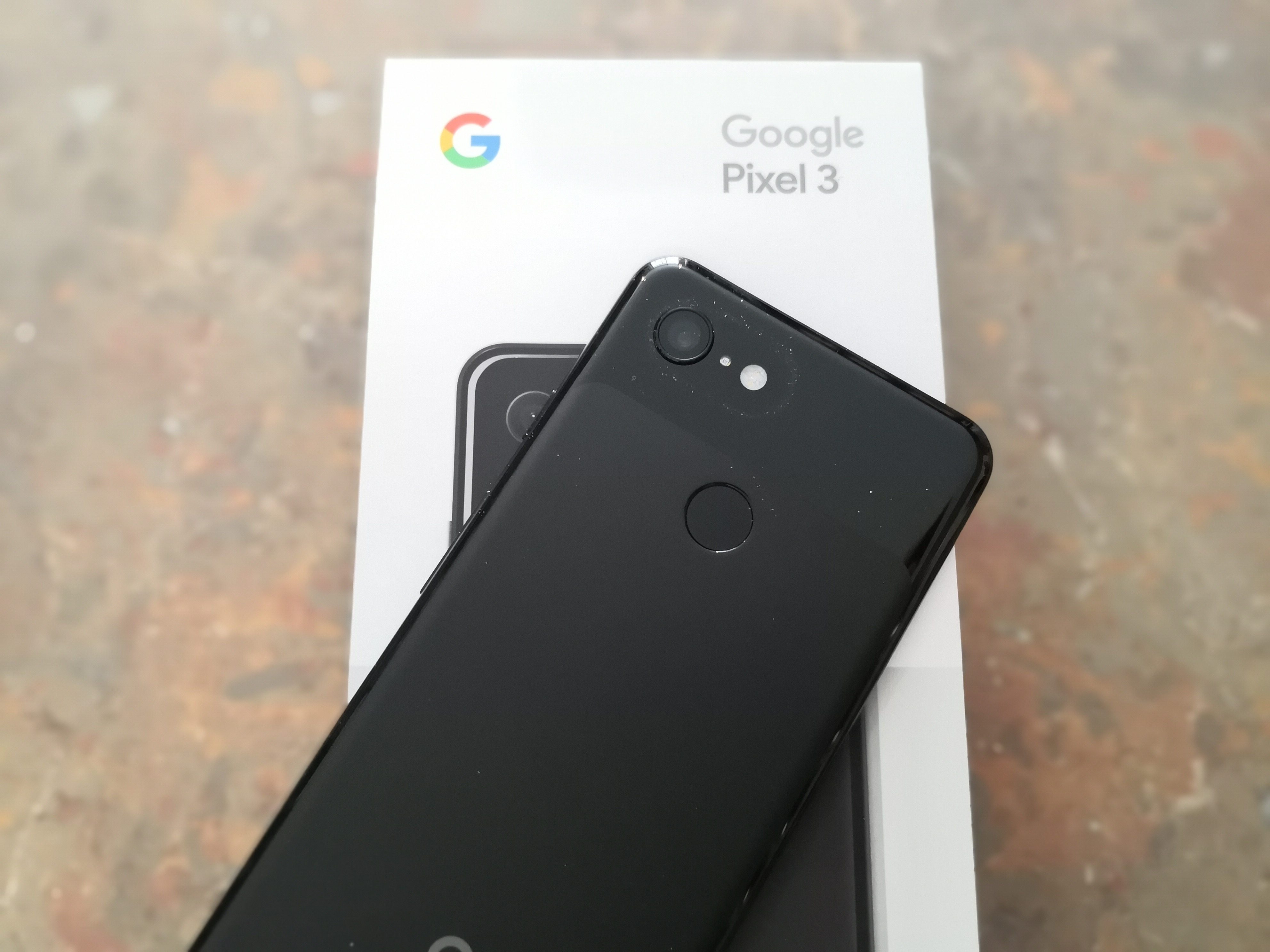








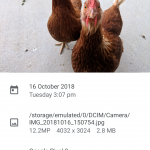
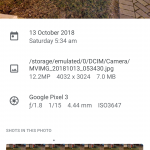



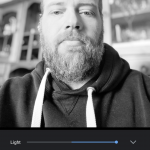

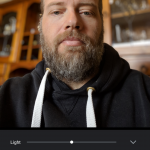
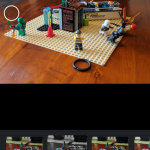



Wish Google hadn’t left the headphone jack off the Pixel 3.
How do the updates on the carrier variants work? Have they got a deal like apple for updates to be pushed out at the same time or will they be updated whenever AKA barely ever?
Google makes the updates available on their website so you can load them yourself if your carrier is stalling for whatever reason. https://developers.google.com/android/ota
That being said, the carriers don’t tend to get in the way of Pixel updates (most likely because they know Google makes them available on their website and easy to load onto the phones).
When my Optus contract hits 12 months, I think I’ll forgoe my S9+ for the Pixel 3XL.
Could somebody on a Pixel 2 XL or Pixel 1 XL go down to Pixel 3, or is a pretty big screen size difference?
You could definitely go down. It’s amazingly packed a 5.5″ screen into this body
Cheers, looking forward to seeing it in person.
Given the 1XL had a 5.5′ screen… i would say there should be absolutely no issues..
2XL? Good Q – as I am on a 2XL and must say not taken with the 3XL notch,..